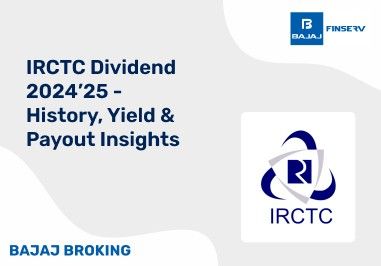Margin trading is a leveraged investing method that allows investors to borrow money from a broker to buy stocks. In simple terms, it enables an investor to purchase more securities than their available funds would allow by using borrowed capital. This method magnifies both potential gains and losses, making it a powerful tool for experienced investors.
How Margin Trading Works: A Step-by-Step Explanation
- Opening a Margin Trading Account: The first step in margin trading is opening a Margin Trading Facility (MTF) account with a broker or depository participant (DP). This account functions separately from your regular trading account.
- Depositing the Minimum Margin: The investor must deposit a minimum amount into their MTF account, as specified by the broker or DP. This is known as the 'minimum margin.' This balance needs to be maintained to keep the account active.
- Borrowing Funds from the Broker: When initiating a trade, the investor is required to deposit a percentage of the total trade value. The remaining amount is funded by the broker. This borrowed amount is subject to a nominal interest rate.
- Executing the Trade: The investor uses the borrowed funds to purchase stocks, leveraging their position. The stocks bought serve as collateral for the loan from the broker.
- Interest Charges: On the borrowed amount, the investor incurs interest at a rate specified by the broker, typically lower than traditional loan rates but still impactful on overall returns.
- Repaying the Loan: After the trade is executed, the investor is expected to pay back the borrowed amount within a specified period, usually along with any interest charges.
Key Benefits of Margin Trading
Increased Buying Power: Margin trading allows investors to buy more securities than they could with their available funds, potentially leading to higher returns.
Leverage for Greater Profits: By borrowing funds, investors can amplify their exposure to winning stocks, which could significantly boost profits in a rising market.
Flexibility: Margin accounts can carry forward positions from one trading day to the next, offering flexibility in handling long-term trades.
Key Risks of Margin Trading
Potential for Increased Losses: While the upside potential is greater, the downside is also significant. Losses can exceed the initial investment if the market moves unfavorably.
Interest Charges: Investors must pay interest on the borrowed funds, which can eat into potential profits if the investments do not perform as expected.
Margin Calls: If the value of the securities bought on margin decreases, investors may face a margin call, requiring them to deposit additional funds or sell securities to meet the minimum margin requirement.
Margin Trading Features
- Authorised Brokers: Only brokers registered and licensed by SEBI (Securities and Exchange Board of India) are allowed to offer margin trading facilities to investors.
- Collateral: Investors can use either cash or securities as collateral to borrow money from their broker. The securities in the investor's portfolio can be leveraged to gain access to additional capital.
- Carry Forward: Margin trading offers the provision to carry forward positions from one trading day (T) to multiple days, as determined by the broker (N). The duration (N) can vary from one broker to another, allowing flexibility for long-term investors.
- Margin Increase: In a bullish market, as the value of stocks rises, the margin (collateral) also increases, giving investors the opportunity to purchase more securities on margin.
Understanding Margin Trading
Margin trading is a leveraged investing method by which investors can borrow money from a broker to buy stocks. The main aim of margin trading is to provide the investor with the provision to purchase more than their current funds will let them. The margin trading facility helps investors take a larger position and can also eventually lead to possible gains for them.
The Margin Trading or MTF account is a separate account that an investor needs to open with their DP or broker. The MTF account needs to hold a specified minimum balance, which the broker or DP declares. This minimum balance needs to be maintained, and is called ‘minimum margin’. The operations of such an account are predefined by both SEBI and the stock exchanges.
When the time to initiate a trade comes, the investor will have to deposit a percentage of the total trade value while the remaining amount is funded by the DP or broker. On the amount funded by the broker, a minimal, usually affordable interest rate is charged to the investor.
Certain features are involved in margin trading. These margin trading basics are listed below are some of them:
Authorised Brokers: Not all brokers are allowed to provide the margin trading facility to investors. Only brokers who are registered and licensed by SEBI can offer this provision to investors.
Collateral: There are two types of collateral that investors can use in margin trading. This includes either cash or securities in the investor’s portfolio. An investor can leverage either to borrow money from the broker
Carry Forward: Margin trading offers its investors the provision to carry forward their position from the trading day (T) to several days which is determined by the broker (N). N here can vary from one broker to another.
Margin Increase: When the market is bullish and stocks are being appreciated, then an investor’s margin that has been put down as collateral also increases. As a result of this, investors can buy more securities on the margin if they want to.
Additional Read: What are DP Charges
Benefits of Margin Trading
There are several benefits of margin trading. Below is a list of some of them:
Higher Returns
With a leveraged investing facility like MTF, investors can improve their return percentage on the capital provided with the least amount of capital allocation.
Betting on Bigger Trades
Margin trading helps investors carry out larger trades that are above and out of an investor's budget keeping their available funds in mind. This leverage investing facility provides up to 4x leverage value. This limit however will vary from asset type and trade value to another.
SEBI Monitored
SEBI monitors the brokers that can provide the margin trading facility to investors, and these usually include corporate brokers. Even the securities that are allowed under the margin trading facility are determined by SEBI and other exchanges.
Using Stocks or Security as Leverage:
Apart from using cash as leverage, MTF also allows investors to utilize the existing securities in their portfolio and leverage it or use it as collateral as well.
Safety
Since the brokers providing MTF and the securities listed under MTF are monitored by SEBI, this leverage investment facility is safer than a few other investment options. SEBI ensures and continuously amends the rules to provide better provisions and security to traders and investors.
Several approved MTF scripts
Many brokers who are authorized to provide MTF to investors also hold with them several MTF scripts that traders and investors can choose from. These scripts are approved and are safe to choose from.
Low-Interest Rates
A majority of the brokers that provide MTF offer a nominal interest rate for investors to borrow on. This helps investors buy bigger stocks, while not losing money on the payout of the borrowed amount from the broker.
Risks Associated with Margin Trading
Where are benefits associated with margin trading, there are certain risks that the leverage investment facility also poses. Below is a list of some of them.
Higher gains, but higher losses:
There is no doubt that margin trading helps amplify gains. However, the same also holds in case of losses. Suppose the value of the security or securities bought on margin by the investor declines rapidly. In that case, the investor or trader will end up owing their initial investment and will have to top that off with additional capital to the broker.
In case of high-interest rates:
Though most lenders or brokers offer a nominal interest rate in MTF trading, certain corporate lenders might charge higher interest rates. This is why investors must research before selecting the broker they want to go with.
Margin Call:
A margin call is a requirement that the broker presents the investor with. This requires that the trader or investor deposit additional funds into their margin account due to the fall in the value of the securities being held in it. This is an issue that might end up keeping investors on edge if the market is volatile.
Forced Liquidation:
Forced liquidation of the MTF account me occur if (a) the investor is not able to deposit the additional equity or (b) if the value of the MTF account drops rapidly breaching margin requirements. With the forced liquidation, investors will have to sell the securities that were purchased on margin which may lead to losses.
Margin Requirements and Regulations
To protect the interest of the traders and bring transparency to the MTF process, SEBI has established and implemented new rules. Below is a list:
The initial margin requirement when it comes to the cash segment is as follows:
On the day of the trade (T day), a minimum of 20% of the margin is required for margin reporting
On the next day after the trading day, or T + 1 day, any additional margin that needs to be paid needs to be done by T + 2 days.
The initial margin requirement for selling shares is as follows:
Share Pledging:
Initially, if an investor had to pledge shares to obtain a margin, they had to transfer the shares to the broker’s account or give the broker Power of Attorney
Now, the shares remain in the investor’s demat account. The limit that is placed on the shares that are given as collateral will only apply to the shares that are provided as the margin under the Margin Pledge Mechanism
For BTST trades, an upfront margin is necessary on both the buy and sell elements.
Strategies for Effective Margin Trading
When it comes to some of the margin trading basics, participating in a leveraged investing facility like MTF needs certain strategies in place to make the process effective. Below is a list of some of them:
Investors need to figure out how much risk they can take in MTF. This will further help them figure out how much they can borrow with MTF. With the risk appetite sorted, investors should have clear trading goals in mind.
Investors need to recognise the importance of starting small. With zero-margin trading experience, traders can face heavy losses. Begin with a small amount and examine the results. Then gradually increase the amount. It is also crucial that investors read more about technical and fundamental indicators and risk management techniques to navigate the MTF waters better.
Margin trading can be risky because of the inherent volatility of the market. This is why investors need to diversify their investments across various securities. This helps offset any potential losses with potential gains from other investments.
Investors should never go into trading without conducting their research. This holds specifically for the securities they are looking to buy through margin. From company fundaments and historical prices to the current market trends everything needs to be analysed before buying a share.
Investors need to stay on top of their investments and monitor them regularly. Because of the real-time fluctuations in the stock market, the value of a trader’s investments can change rapidly. If needed, investors can also make real-time adjustments when regularly monitoring their investments to limit losses or lock in profits too.
Where on the one hand MTF offers better profits, it can also lead to higher losses. Thus, over-leveraging is discouraged as a part of MTF. If investors end up borrowing more than their means, they could face significant losses.
Comparing Margin Trading with Traditional Investing
There are significant differences between margin trading and traditional investing. Below is a list of some of them.
Features
| Margin Trading
| Traditional Investing
|
Leverage
| Using leverage to help investors buy more than their available cash will let them
| No leverages are used. Investors can only invest according to their affordability
|
Risk
| Riskier and has the potential for greater losses in a volatile market, especially with the possibility of margin calls
| Less risky as investors use only their funds to invest. As a result, the risk of margin calls does not exist.
|
Return
| Chances of higher returns because of a larger position.
| Returns dependent on the money invested by the trader
|
Interest
| Semi-annual or annual interest needs to be paid to the lender, which can vary from one lender to another
| No interest as no amount is borrowed.
|
Account
| Requires an MTF account with the lender and has to maintain a specified minimum balance in it.
| Can be conducted through the normal trading account. No special requirements.
|
Margin Trading Tips and Best Practices
When investors enter the MTF trading world, having a few tricks up one’s sleeve to make the best out of the experience. Below is a list of some of the best tips and practices that investors can partake in:
Since many stockbrokers provide MTF, it is important to pick the ones offering the best and most affordable interest rates. This interest has to be paid annually to your stockbroker, and knowing the rate before you begin your MTF journey is important to make an informed decision.
With a stop-loss order in place, investors can avoid losses and margin calls. The stop-loss order helps the stockbroker automatically sell an investor’s shares when they fall below a particular price level.
Investors should never invest all they have in MTF. Investors must have a backup fund to fall back on in case their MTF investment suffers losses.
Before investors decide to opt for MTF, they should read all the terms and conditions associated with the facility. This will help them stay informed and on top of their investment potential.
The margin call is considered a warning issued by the stockbroker to make the investor add funds to the MTF account to cover losses. Investors might also need to sell stocks to offset the losses. Every stock an investor buys on margin holds a price level that triggers this margin call.
Conclusion
Margin trading is a leveraged investing method that helps investors buy securities worth more than the funds they hold by borrowing funds from the stockbroker. The stockbroker charges a nominal rate of interest, yearly, on this borrowed amount from the investor. However, investors need to be aware that since the stock market is volatile, MTF trading can lead to both significant gains and losses. This is why investors need to look at every aspect of buying a security on margin before actually purchasing to avoid any potential losses. Research and gaining more knowledge about MTF trading is crucial for investors to make the best of their investment.
Disclaimer: Investments in the securities market are subject to market risk, read all related documents carefully before investing.
This content is for educational purposes only. Securities quoted are exemplary and not recommendatory.
For All Disclaimers Click Here: https://bit.ly/3Tcsfuc













